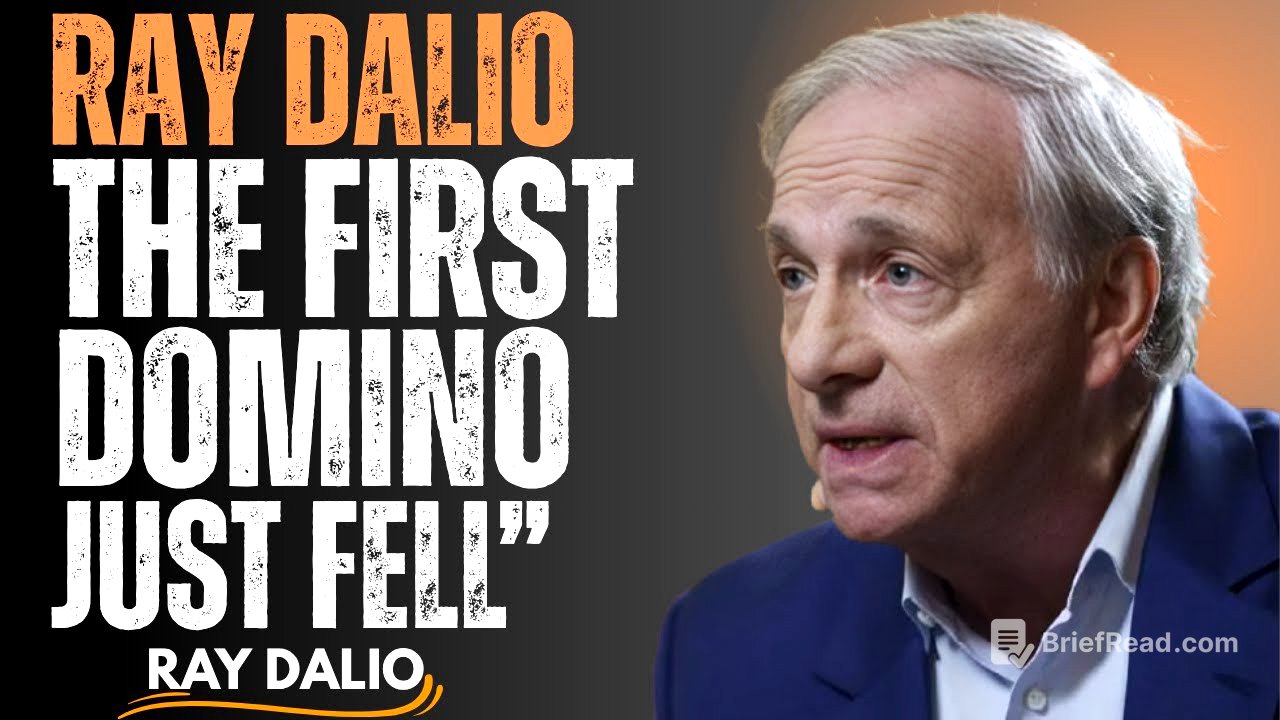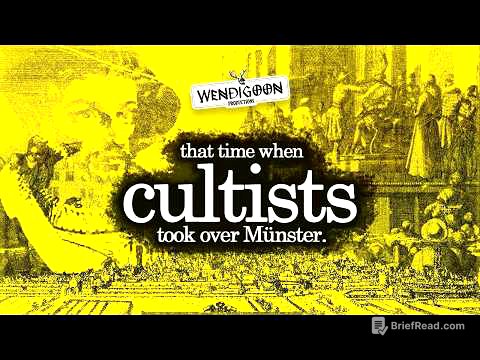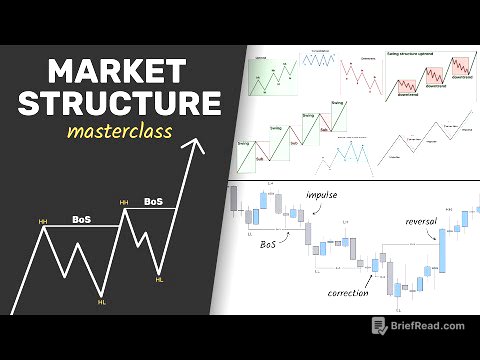TLDR;
This video discusses the convergence of debt buildup, social fracture, geopolitical tension, and monetary breakdown, which indicates a generational economic shift. It emphasizes understanding historical patterns, managing debt wisely, recognizing internal and external challenges, and diversifying to navigate risks and opportunities. The video encourages proactive preparation and decisive action to shape a better future rather than becoming victims of the collapse.
- Debt cycles and their unsustainable growth patterns.
- Internal fractures within societies and geopolitical decoupling.
- The erosion of trust in the monetary system and the importance of diversification.
Introduction: A Generational Economic Shift [0:00]
The world is currently experiencing a significant inflection point in modern history, characterized by recurring patterns of debt buildup, social fracture, geopolitical tension, and monetary breakdown. These forces are converging, indicating a collapse that will change a generation, rather than just another recession. Historical patterns, from the Dutch tulip mania to the 2008 crisis, reveal similar forces at play.
Debt Cycles and Unsustainable Growth [1:45]
Debt accumulates and becomes unsustainable as people and governments borrow beyond their means during economic optimism. While debt can be a powerful tool when used responsibly, problems arise when it grows faster than income and productivity. Servicing the debt then weighs heavily on income, leading to more debt issuance and higher interest expenses. This cycle cannot continue forever, especially when low interest rates lead to complacency and increased leverage. Rising interest rates then cause debt to become crippling for households, corporations, and governments, making the entire system fragile. Prolonged debt cycles create a dangerous feedback loop where debt fuels spending, which drives growth, encouraging more borrowing and inflating asset prices, creating a false sense of security.
Inflation, Interest Rates & Policy Failure [4:32]
Central banks lower interest rates and use quantitative easing to stabilize markets, but this introduces risks such as distorting price discovery and widening inequality. Governments may resort to fiscal stimulus, adding to public debt. The system becomes reliant on artificial support, and confidence erodes. Structural problems that caused the debt buildup are often overlooked, with symptoms treated instead of addressing the root issue of debt-fueled growth. Without structural reforms, the system reverts to the same cycle, growing more dangerous with each iteration as the capacity for future borrowing diminishes. Managing debt wisely and aligning spending with productivity are crucial to navigating the cycle with resilience.
Internal Fractures: Social & Political Divides [7:12]
Societies unravel from within due to tensions between rich and poor, educated and uneducated, urban and rural, left and right, and old and young. These tensions build over time, fueled by political dysfunction, economic disparity, and social resentment, until internal divisions become too large to ignore. Shared beliefs erode, trust in institutions and leadership diminishes, and the social contract breaks. Extremes become louder, and moderate voices are drowned out by ideological rigidity, marking internal decay.
The Rise of Populism and Decline of Trust [10:08]
Internal conflict weakens a country's ability to respond to external challenges. Rival nations exploit this weakness, allies become uncertain, and adversaries become emboldened. Social cohesion is essential for navigating economic downturns, but high divisions make every policy response controversial. More people become disillusioned, disengage from politics, and support fringe movements. Civil discourse breaks down, and violence becomes normalized, leading to a crisis of legitimacy. Societies that recognize these warning signs early can still course correct through strong leadership, shared sacrifice, and a return to common purpose.
Geopolitical Decoupling & Cold War 2.0 [13:26]
The world is undergoing a reordering through a strategic and accelerating process of separation, as the old model of globalization frays. Trust is breaking down between nations, leading to decoupling, which is a comprehensive strategic divergence between major powers, particularly the West and China, with Russia playing a destabilizing role. This plays out across supply chains, financial systems, military alliances, technology standards, energy markets, and currency reserves. The world is pulling apart into competing blocks, with each side trying to insulate itself to gain leverage and minimize vulnerability.
Dollar Dominance & Monetary Order Cracks [16:14]
Countries are reshoring manufacturing capacity for security, prioritizing control over efficiency in sectors like semiconductors and critical minerals. Competition intensifies over control of future infrastructure like AI, 5G, and quantum computing, leading to export controls, investment restrictions, and regulatory bifurcation. Finance is undergoing realignment as the use of sanctions accelerates efforts to develop alternatives to the U.S. dollar. Countries are settling trades in local currencies, building alternative payment systems, and diversifying reserve holdings, signaling a fundamental shift in the global order.
Diversification and Systemic Risk Management [18:40]
Monetary systems are built on belief in stability and value, and when that belief weakens, systems begin to show cracks. The current global system centered around the U.S. dollar has been in place since the end of World War II, but high fiscal deficits, growing debt-to-GDP ratios, and reliance on ultra-loose monetary policies have begun to undermine confidence. As inflation rises, policymakers face a dilemma, straining confidence in a fiat monetary system.
The Next Phase: Pain or Reinvention [21:15]
Globally, there is a movement away from dependence on a single currency, with countries entering bilateral agreements, increasing gold holdings, and investing in digital currencies. This signals a loss of trust in the long-term reliability of the existing system. The unraveling of a monetary order means transition, volatility, and uncertainty, requiring alertness to signals, capital flows, policy responses, and the behavior of global actors.
Final Thoughts: How to Prepare [23:00]
Balancing risk and opportunity is crucial, requiring an understanding of forces at play, assessing probabilities, and allocating resources to preserve stability while capturing upside. It's important to be prepared for things to go wrong, build in buffers, diversify exposures, and avoid dependency on a single outcome. Diversification is the most reliable tool for balancing risk and opportunity across asset classes, countries, currencies, and economic environments. Building systems that can adapt and preparing for a range of outcomes creates resilience.









